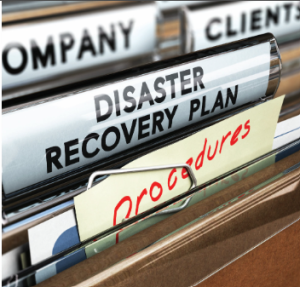 Maine’s unofficial motto, “The way life should be,” has taken on new meaning, according to the Wall Street Journa and Realtor.com. The Winter 2023 Emerging Housing Market Index reported that in October, Maine was nationally ranked as the most popular metro area for luxury condo buyers in the third quarter of 2023. This index was based on greater Portland condo prices as well as the available local amenities including fine dining, diverse entertainment opportunities, and overall quality of life.
Maine’s unofficial motto, “The way life should be,” has taken on new meaning, according to the Wall Street Journa and Realtor.com. The Winter 2023 Emerging Housing Market Index reported that in October, Maine was nationally ranked as the most popular metro area for luxury condo buyers in the third quarter of 2023. This index was based on greater Portland condo prices as well as the available local amenities including fine dining, diverse entertainment opportunities, and overall quality of life.
Portland’s rise in this important housing market index, from sixth place in the prior quarter, did not come as a surprise to many. Following the theory that a rising tide lifts all boats, it can be expected nearby Maine real estate markets will be positively affected by this good news as well. But rising property values and the resulting increase in unit owner net worth comes with a price – namely, the increased need for protection against unexpected disasters and the rising costs to recover from them.
UNIQUE RECOVERY NEEDS
Disasters are here to stay. Like the bumper sticker says, “it happens.” It happens to the best condominiums and homeowner associations. In New England, it can be hurricanes, tornados, micro-bursts, floods, ice storms, and even landslides. High and mid-rise condos face higher risks from fire and internal flooding, requiring different risk and recovery planning than horizontal multi-plex unit buildings. Resort condominiums have higher rates of absentees while senior living condos have special evacuation needs. Amenities such as marinas, tennis courts, clubhouses, pools, retention ponds, and dams can have a significant impact on any recovery plan.
Disaster planning is all about saving lives, reducing suffering, and minimizing damage. The key elements of a good plan include thoroughness, well-considered preparation, and an orientation toward recovery. This post-disaster management aspect is often overlooked.
DISASTER PLAN DEVELOPMENT
So how do you start? The board should create and appoint a disaster team with at least one member of the property management staff and a board member. Residents with skills in insurance, legal matters, electrical systems, HVAC, plumbing, and emergency response should be invited to join the team. There are many resources for a general outline of disaster plans. Your insurance company may have pre-prepared templates of these types of plans for easy customization for your community’s needs.
The written plan needs to be approved by the board. The plan should be available in multiple easy-to-access locations. It should be periodically reviewed and rehearsed. A good plan will have a checklist of needed steps, procedures to follow, and basic supplies to have on hand.
Here again, your insurance carrier may be able to provide disaster training guidance and other resources. Just ask. You may also want to consider seeking training grants or funding through Community Emergency Response Training (CERT), a national training agency providing instruction on health, safety, and wellness.
The key elements of a good plan include thoroughness, well-considered preparation, and an orientation toward recovery.
THE BASIC DISASTER PLAN OUTLINE SHOULD CONSIDER THE FOLLOWING:
- Assessment of disaster risks -both past experience and
- Planning- budgeting and
- Property management
- Safeguarding important condo
- Ledger of assets – written &
- Communication plan – elderly and special needs, absentees, etc.
- Emergency equipment available- condo and resident-own
- Lines of
- Evacuation
- Insurance
- Vendor and contractor call l
- Recovery
POST CLEAN-UP CONSIDERATIONS
Recovery is not simply the clean up after the disaster, but a proactive real estate marketing plan. Whether it be a simple sprinkler pipe leak causing flooding and mold in an empty unitor a fire destroying a building or a wing of a complex, it is important that the board plan for what is to be done after the final repair contractor has left. The common-denominator need of all condo unit owners is protection of their net worth. After any disaster, the impact on market value and sale potential of all units must be considered. It should never be assumed just because everything has been brought back to “as good as it was” before the disaster, that the real estate market will perceive this to be the case. The association may need to implement positive steps to approach local real estate professionals and clearly demonstrate the physical state of the current condo complex. This could include certified inspection reports, lab test results, or whatever it takes to make market perception the reality.
Written by Jack Carr, P.E., R.S., LEED-AP, Senior Consultant Criterium Engineers
Published in Condo Media
